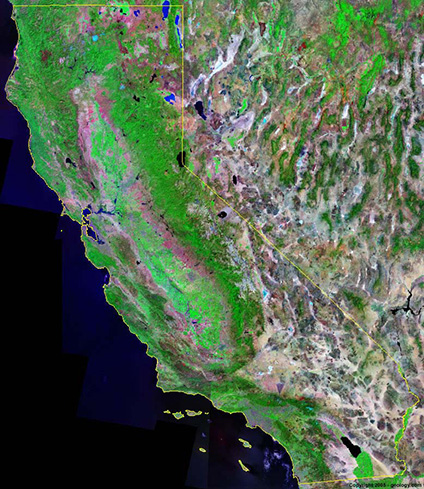News and Stories
Changes Afoot: San Joaquin Valley Water Shortages

As we have all become accustomed, the seasonal harvesting shift from the Salinas Valley down to the Yuma, Arizona region will start in late October/early November. Typically growers use the Huron, California/San Joaquin Valley (SJV) area as a transitional mini-season between the two larger growing periods. In fact, we have been doing this triangular move for as long as I can remember, back at least 50 years. But because water is scarce and only becoming scarcer—big changes are on the horizon.
Let’s back up a bit and review some statistics regarding the water levels and allowances for the San Joaquin Valley. Much of California has been in a state of dryness, or drought, off and on since the 1920s. The latest drought started in 2007 and shows no signs of abating. Because ground water levels have dropped dramatically due to over-pumping, irrigation in the form of water allocation is a must to maintain the crops that are so vital to the seasonal harvests. Growers and scientists have done much to improve irrigation technology (GPS-guided tractors, larger drip tubing, improved installation and retrieval systems for drip, improved spray packages, etc.), but without more water, it is a losing battle. In 2006 the region was allocated 100% of its water needs…by 2009, it had gone down to 10% and continues to decrease. This year Central California received well below 50% of its normal rainfall, causing further allocation cut backs and tripling this fall’s fees. Last year growers paid $300-$400 per acre foot…and this year? Growers will fork over a whopping $1,200 per acre foot. Combine these with the fact that the population of California is expected to grow by 12 million people (who also need water) by 2050, and you see that the SJV simply does not have enough water for the agricultural projects they are being contracted to fulfill.
How does this affect those of us that buy the produce grown and harvested in this region? Price. Every time there is a water shortage, the price of growing goes up and that gets passed along the chain: to the growers, to the buyers, to the distributors, and our foodservice customers. This has been happening incrementally for many years, so you may ask, what is different? The difference is that we are reaching unsustainable levels and will be forced to make a choice soon. Do we continue to harvest in a region with climbing costs or do we look at alternative measures?
Clearly it’s time for action. Already many growers are addressing the problem by lengthening the Salinas Valley season (by planting as much as 33% more acreage in Salinas this fall) as well as starting the Yuma season early to shorten or avoid the usual time spent in the SJV.
Problem solved? Not so fast. By lengthening a season or starting early, certain quality problems may arise. An increase in premature pinking, light weights, mildew, and increased dirt in commodity packs could occur due to cold, wet weather conditions if growers decide to stay longer in Salinas, while seeder, fringe burn, internal burn, sun scalding, and dehydration may result from extreme heat if growers start earlier in Yuma. Of course, if any of these quality problems becomes significant, prices will climb, essentially bringing us back to square one.
Those of us that have worked in produce for a number of years know that the category is not without its problems. Perishable foods are delicate and require careful handling from seed to plate, but today’s additional water shortages are making these issues feel like a piece of cake.
Markon continues to work closely with our grower-partners, as well as the top scientists and food safety experts in the industry to ensure we are taking the most sensible and sustainable course of action moving forward. We hope you will continue to follow this ongoing blog discussion as history is being made.
Best Regards,
Tim York
